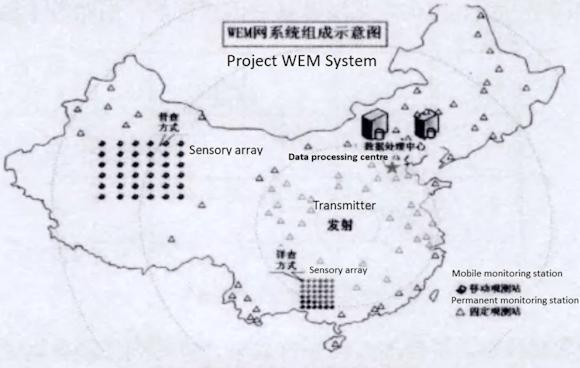For a long time, Beijing has considered becoming a maritime power an urgent and necessary factor to achieve the desired role of global player.
The South China Morning Post1, the most important newspaper in Hong Kong, published a long article a few days ago on the newly acquired Chinese ability to communicate with its submarines by radio, using a new terrestrial station.
It took 13 years to develop the WEM (Wireless Electromagnetic Method) system, capable of emitting Extremely Low Frequency (ELF) radio waves.
The new station, whose location is not known (but could be located in the Huazhong region of central China), occupies 3700 sq. Km - five times the size of a city like New York - and consists of a huge antenna capable of emit ELF signals with a frequency between 0,1 and 300 hertz.
The structure consists of a pair of high-voltage power lines, oriented respectively from north to south and from east to west, resting on steel pylons, to form a wide 60 km and long cross from 80 km to 100 km.
Two power plants electrify the ground with high, slow and repeated pulses (the two lines end up buried with a thick copper wire) radiating electromagnetic waves in the earth's crust, which can be captured by any receiver within a radius of 3.500 km.
Among the advantages of the system, the difficult identification of the apparent resemblance to a normal electric network and its difficult neutralization, being located far from the coast.
This capacity is also configured as dual use, which can be used in the field of geological introspection (detection of minerals and oil, detection of deep underground structures and analysis of earth fault crust for the study of earthquakes).
The disadvantages, on the other hand, are due to the carcinogenic power of low frequency emissions, as repeatedly attested by the World Health Organization, which considers ELF waves extremely harmful to humans.
Over the years, the United States and Russia have also achieved significant capabilities in the field of short-wave transmission.
The USA built in Wisconsin, starting from the end of the 60 years, a station with two 45 km electric lines, able to emit ELF waves to 76 hertz (it was abandoned more than ten years ago). The US Navy has over time preferred to use for submarine communications, VLF frequencies (very low frequency), including between 3 and 30 kilohertz, able to convey more information and penetrate the water to greater depth (up to 40m).
In the 80 years the Soviet Union also built an ELF station in the Arctic polar circle: it was powered by two 60 km electric lines, with a frequency of 82 hertz, able to reach all submarines under the polar ice cap.
Russia, probably, is no stranger, in terms of technical support, to the achievement of this new goal by Beijing.
1https://www.scmp.com/news/china/science/article/2180071/chinas-new-anten...












